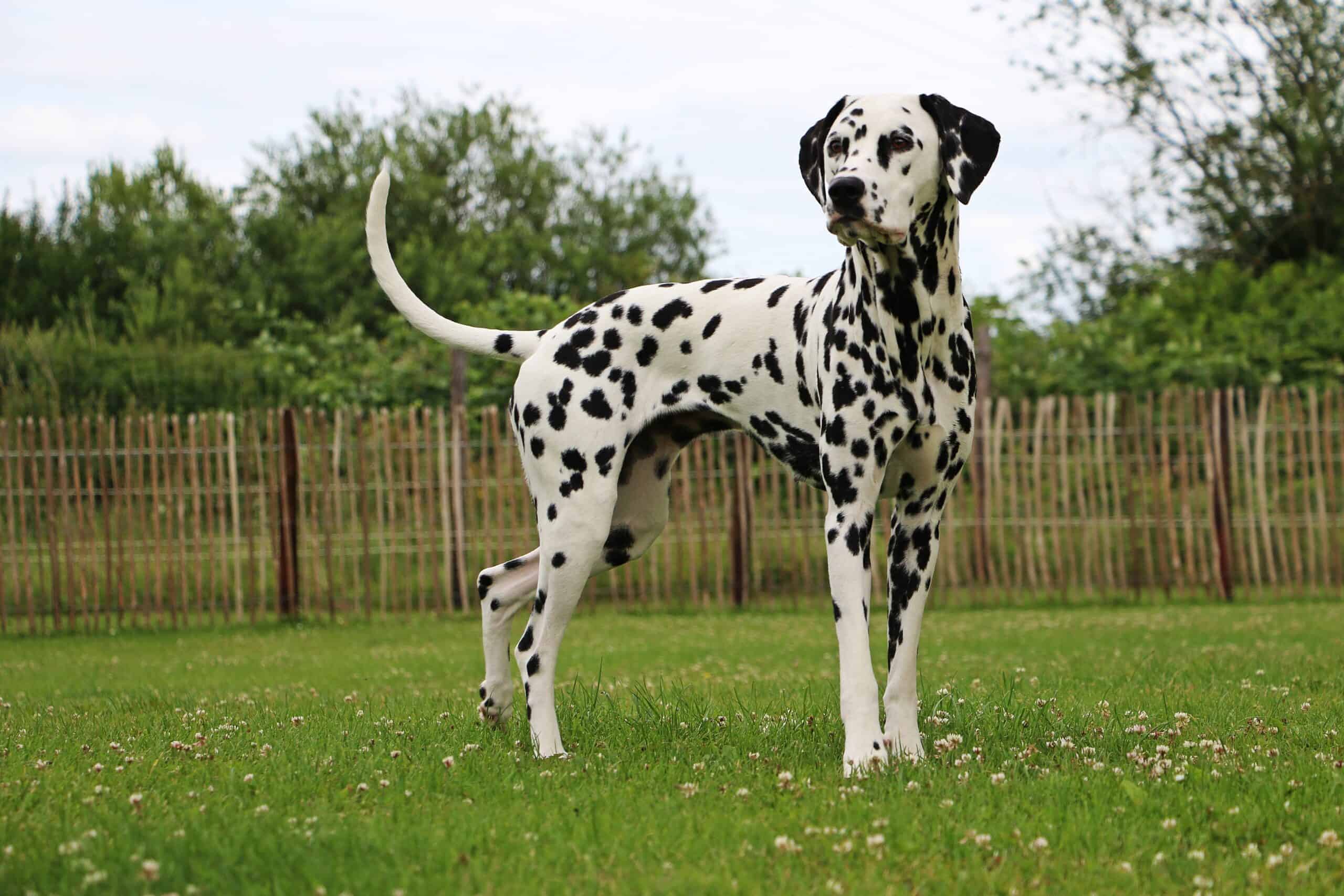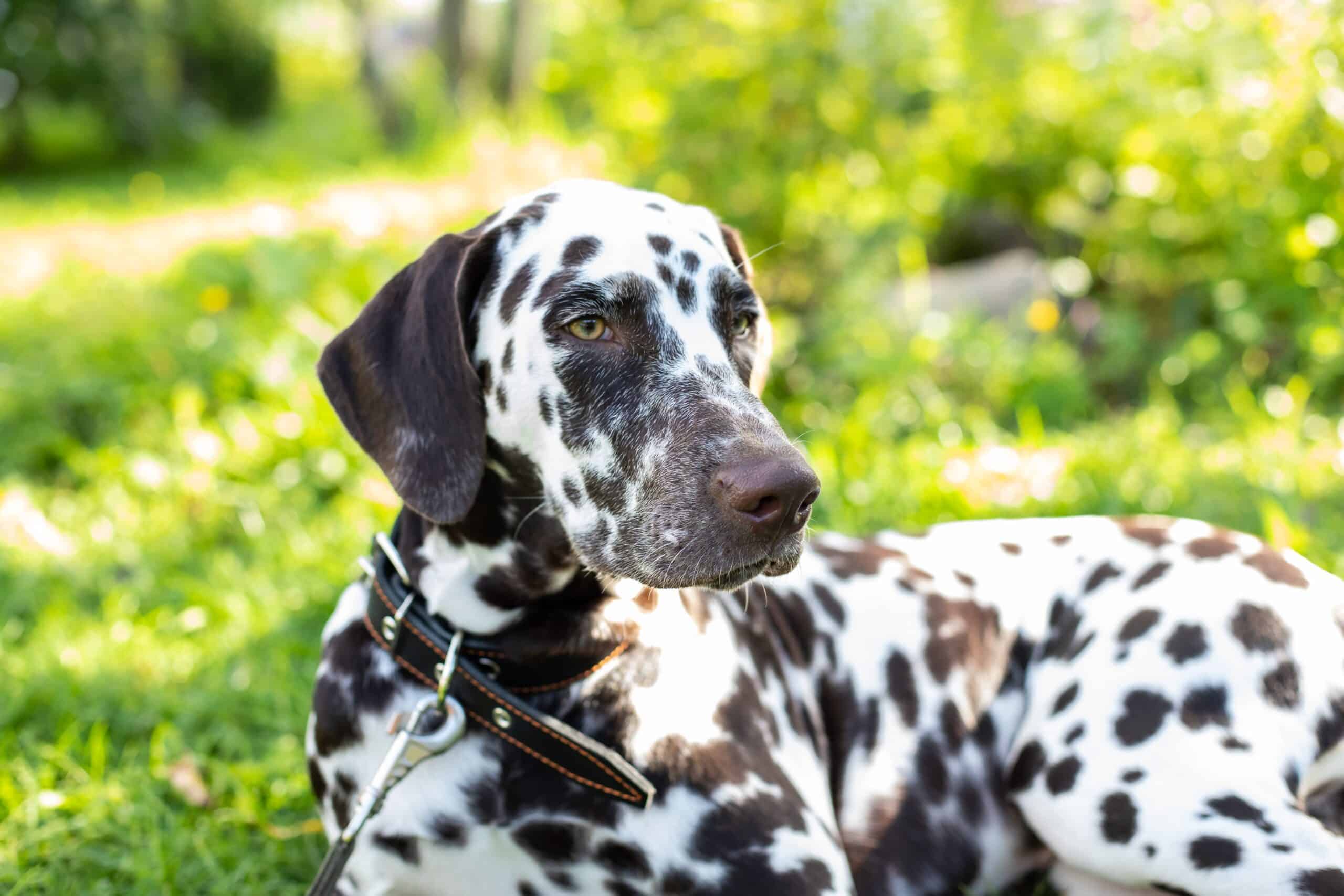Dalmatians are a well-known breed of dog, known for their distinctive spotted coat. However, many people may wonder what color are Dalmatians?
While the classic black and white spotted coat is the most well-known, there are actually several other colors that Dalmatians can come in.
According to the American Kennel Club, the standard colors for Dalmatian spots are black and liver. These colors are typically seen as spots on a white coat.
However, there are also other possible combinations, such as lemon, orange, or tan spots on a white coat.
It is important to note that while these colors are recognized by some kennel clubs, they may not be accepted in all competitions.
For those interested in owning a Dalmatian, it is important to research the breed thoroughly to ensure that it is the right fit for their lifestyle.
Dalmatians are known for their high energy and need for exercise, so they may not be the best fit for those who live in small apartments or do not have the time to provide them with adequate exercise.
However, for those who are able to provide them with the care they need, Dalmatians can make loyal and loving pets.
Table of Contents
Dalmatian Colors – What Color Are Dalmatians?

Dalmatians are known for their distinctive black spots on a white coat. However, many people are surprised to learn that there are actually several different color variations for this breed.
In this section, we will explore the different Dalmatian colors, including black and white, liver, lemon, orange, blue, and brindle.
Black and White Dalmatians
Black and white Dalmatians are the most common and well-known color variation.
The American Kennel Club considers this color variation standard, and the spots are typically dense black in color.
The spots are round and well-defined, ranging in size from a dime to a half-dollar.
Liver Dalmatians
Liver-spotted Dalmatians have liver brown spots on a white coat. This color variation is also considered standard by the American Kennel Club.
The spots are round and well-defined, similar to those of black and white Dalmatians.
Lemon Dalmatians
Lemon-spotted Dalmatians have pale yellow spots on a white coat.
While not as common as black and white or liver-spotted Dalmatians, this color variation is still recognized by the American Kennel Club.
The spots are round and well-defined, and should be of a uniform color.
Orange Dalmatians
Orange-spotted Dalmatians have deep orange spots on a white coat.
This color variation is also recognized by the American Kennel Club, but is less common than black and white or liver-spotted Dalmatians.
The spots should be round and well-defined, and of a uniform color.
Blue Dalmatians
Blue Dalmatians have a diluted black coat, resulting in a blue-gray color.
This color variation is not recognized by the American Kennel Club, and blue Dalmatians are not eligible to compete in AKC shows.
While they may have black spots, the spots may be harder to see due to the diluted coat color.
Brindle Dalmatians
Brindle-spotted Dalmatians have a coat with a mix of black and brown hairs, resulting in a brindle pattern.
This color variation is not recognized by the American Kennel Club, and brindle Dalmatians are not eligible to compete in AKC shows.
The spots may be harder to see due to the brindle pattern.
Genetics of Color
The genetics of color in Dalmatians is complex and involves multiple genes.
Role of Genes
The color of a Dalmatian’s coat is determined by the interaction of several genes. The TYRP1 (brown) locus on chromosome 11 plays a crucial role in determining the base color of the coat.
The piebald gene is responsible for the white areas on a Dalmatian’s coat.
Recessive and Dominant Colors
The color of a Dalmatian’s spots can be either black or liver brown. Black is the dominant color, while liver brown is recessive.
A Dalmatian must inherit two copies of the liver brown gene to display this color.
If a Dalmatian inherits one copy of the liver brown gene and one copy of the black gene, it will display black spots.
Color Mutations
Dalmatians can also display other colors and patterns due to mutations in their genes. Pure white Dalmatians are the result of a mutation in the piebald gene.
These dogs have no spots and are completely white. Other mutations can result in variations such as lemon, orange, or tan spots on a white coat.
Coat Characteristics
The American Kennel Club (AKC) recognizes two different types of Dalmatian coats: smooth and long.
In this section, we will discuss the spotting patterns and coat types of Dalmatians.
Spotting Patterns
Dalmatians are known for their unique spotting pattern, which can be black or liver-colored.
The spots can vary in size and shape, and can appear as either solid spots or patches.
According to the AKC, the spotting pattern should be evenly distributed throughout the coat, with no large patches of color.
Coat Types
Dalmatians come in two different coat types: smooth and long. The smooth-coated Dalmatian is the most common, and has a short, dense coat that lies close to the skin.
The long-coated Dalmatian, on the other hand, has a longer, wavy coat that requires more grooming.
Both coat types shed moderately, so regular brushing is necessary to keep their coat healthy and shiny.
Additionally, Dalmatians are prone to developing skin allergies, so it is important to use a gentle shampoo and avoid over-bathing.
Ticking is another characteristic of Dalmatians, which refers to the small spots that appear within the larger spots on their coat.
Ticking can be black or liver-colored, and is a desirable trait in the breed.
Shedding and Grooming
Dalmatians have short, dense coats that shed year-round. Regular grooming can help control shedding and keep their coat healthy and shiny.
According to the American Kennel Club, Dalmatians should be brushed weekly with a rubber curry brush to remove dead hair and distribute natural oils.
They should also be bathed as needed, but not too frequently as this can dry out their skin. Dalmatians also require regular nail trimming and ear cleaning to prevent infections.

